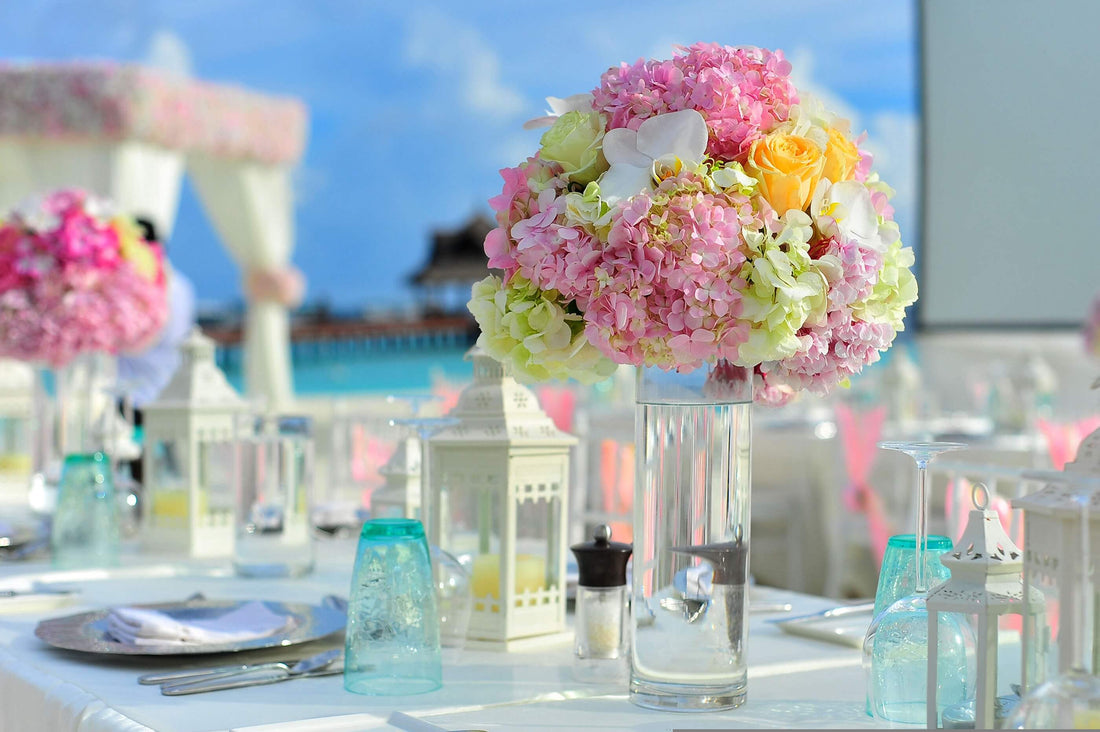It is the season of June brides. Even though June is a rainy season in Japan, June Brides are still popular. The reason why is because of this superstition that is believed. “When it rains on the wedding day, God is shedding tears for the bride and groom for the rest of their lives”. This is a superstition that the bride and groom will shed tears for the rest of their lives. So they can live a happy life together from now on without shedding any tears.

In honor of June Bride, we would like to introduce a wedding ceremony unique to Japan, the "神前式" or "Shinto wedding ceremony”.
In Japan, there is a traditional Japanese wedding style called "Shinzen-shiki," which is held at a shrine or temple. It means that the bride and groom make vows before God.
This is a style of wedding in which you can feel the Japanese spirit of valuing Japanese traditions and "modesty".
In recent years, weddings that incorporate a lot of Western culture have become popular, but it seems that nearly 20% of couples who hold their wedding ceremony choose the Shinzen-shiki.
The Beginning of the Ceremony
It is said that the first Shinzen-shiki was held at Hibiya Grand Shrine for Emperor Taisho in 1900. This wedding ceremony was adopted by the private sector and gradually spread.
参進の儀 (Sanshin no gi)
The procession is a ceremony in which the priest, bride and groom, and attendants walk in a line to the temple where the wedding ceremony will be held. The path to the temple is said to be the sacred domain of God. The bride and groom walk in procession to the temple to calm their minds and prepare to stand in front of God. The procession is also known as the bridal procession, and is one of the most spectacular scenes in a Shinzen-shiki. The people watching around the bride and groom may offer their congratulations to the bride and groom.
What meaning is attached to it?
The rite of approach is imbued with a special meaning. The groom and bride represent the "present," while the family and relatives walking behind them represent the "past. And the temple ahead represents "the future. In other words, it is a precious ceremony to walk toward the future with those who have helped us in the past.
What are the most popular bridal gowns?

This costume is considered the most prestigious of the bride's kimono attire, and all accessories, including the obi and sandals, are all white.

This gorgeous style is also popular. It seems to be a standard practice to wear a white kimono for the ceremony and change into a gorgeous haori for the reception.
Popular staging
Adding an "Origami Crane Shower" instead of a "Flower Shower" and so on. The "Flower Shower" is a ceremony in which the bride and groom are showered with flower petals by their guests as they leave the church.
The "Origami Crane Shower" uses Origami cranes instead of flower petals to create a Japanese atmosphere.

There are also ceremonies in which the bride and groom drink water from their respective families into a single sakazuki (cup). This is a ceremony that strengthens the bond between the bride and groom, as the joining of their respective cups of water signifies the "birth of a new family.
A Shinzen-shiki is held in a solemn atmosphere. It is perfect for couples who want to experience Japanese tradition firsthand.

